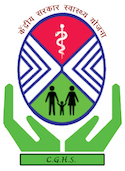Simple at Home Treatments For Cervical Spondylosis that Anyone Can Try

Cervical spondylosis is a fairly common condition that causes stiffness, pain, and discomfort in the neck. While conservative treatments such as medications, physical therapy, and exercise are often recommended for managing symptoms of cervical spondylosis, there are some remedies you can try at home to help relieve your symptoms.
1. Heat and Cold Therapy
Applying heat or cold to the affected area can help reduce inflammation and relieve pain. Use a hot water bottle, or heating pad, or even take a warm shower. Cold therapy can be done by placing an ice pack on the neck for 15-20 minutes at a time.
2. Stretching Exercises
Stretching exercises can help improve flexibility and range of motion in the neck. Make sure to perform these stretches slowly and gently, as jerking or sudden movements may worsen the symptoms.
3. Ergonomic Pillows
Using an ergonomic pillow can help support your head and neck while sleeping, which can reduce strain on these muscles. Choose a pillow that is designed specifically for cervical spondylosis sufferers, as they provide extra cushioning and comfort in just the right spots.
4. Postural Exercises
Poor posture is one of the major causes of cervical spondylosis. To avoid worsening your condition, make sure to pay attention to good posture throughout the day by sitting up straight with your shoulders pulled back. You can also do specific postural exercises to strengthen your neck and upper back muscles.
5. Massage Therapy
Massage therapy can help reduce pain and increase flexibility in the affected area. Make sure to seek out a qualified massage therapist who has experience working with cervical spondylosis sufferers.
6. Guggulu
Guggulu is an herbal remedy that is traditionally used for treating cervical spondylosis. It helps to reduce inflammation and pain, and can be taken in the form of tablets or capsules.
7. Hardira
Hardira is another herbal remedy that may help reduce pain and inflammation caused by cervical spondylosis. This can be taken in the form of tablets or capsules, as directed by your doctor.
These are just some of the conservative remedies that you can try at home to manage symptoms of cervical spondylosis. Always consult with your doctor before beginning any new treatment program or trying any home remedies for this condition, as some may not be appropriate for all individuals. Additionally, never ignore severe or concerning symptoms, such as numbness or tingling in arms, legs, or feet! These could indicate more serious complications that require medical attention.














